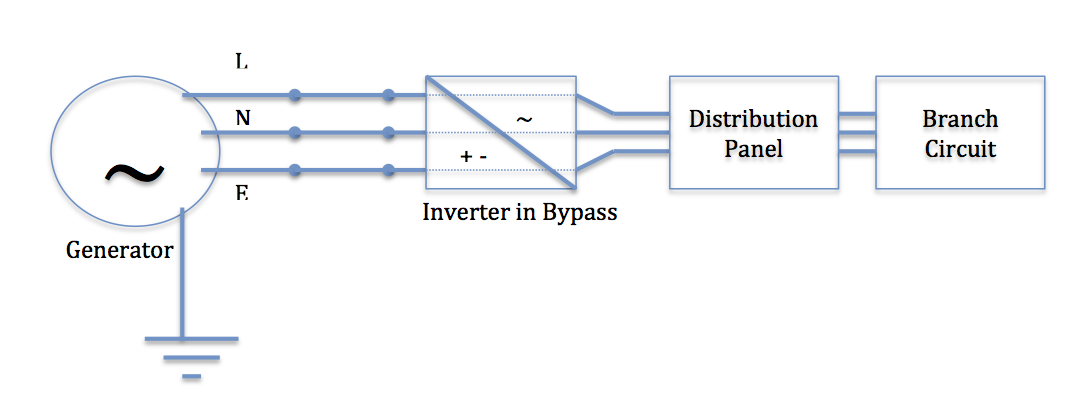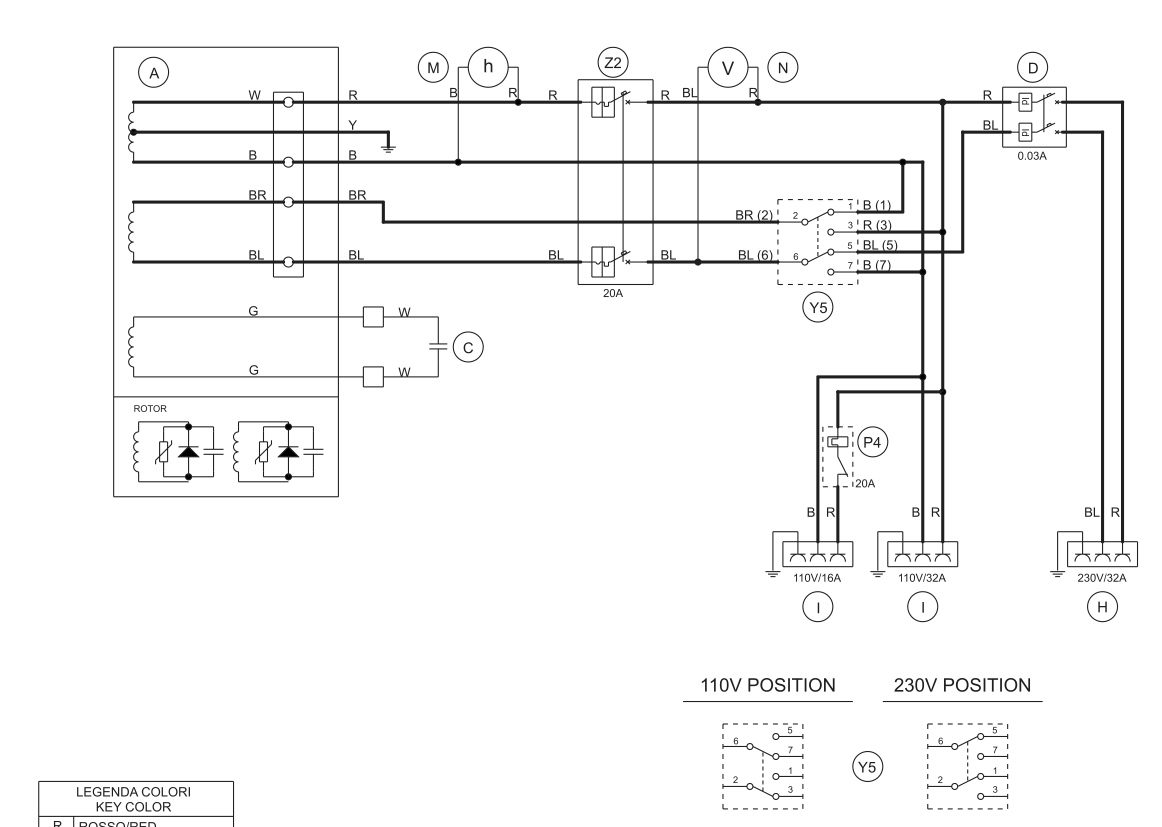We have an off-grid UK home on occasion powered by a generator (MOSA GE 6000 SX/GS).
Due to the design of the generator, it has two modes: centre-tapped-earth 110 V, and 230 V. When running in 230 V mode, the two windings in the generator are connected in series; in 110 V mode, the windings are operated in parallel.
The result is that when the house is powered (generator operating in 230 V mode) there is 50 volts between the neutral and earth, and 180 volts between the live and earth.
I am told by an electrician that the neutral should be 0V (tied to earth) while the manufacturers of the generator unsurprisingly say that 50 volts on the neutral is fine.
Which is correct?
System Diagram
 Note: Generator is connected to earth by an earth stake connected to the case.
Note: Generator is connected to earth by an earth stake connected to the case.
Portion of internal circuit diagram of generator:

Note 1: BL=Neutral (230V), BR=Live (230V). Note 2: The manufacturer added that the two windings are: connected in series when the generator is in 230 V mode, and connected in parallel when in 110 V mode.


